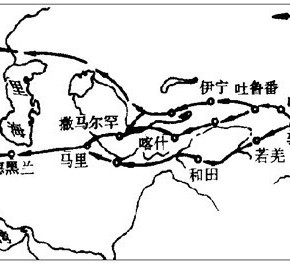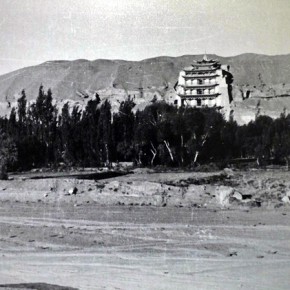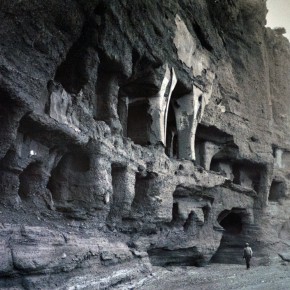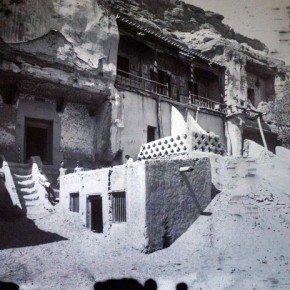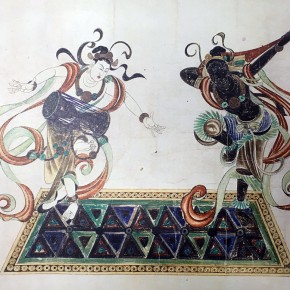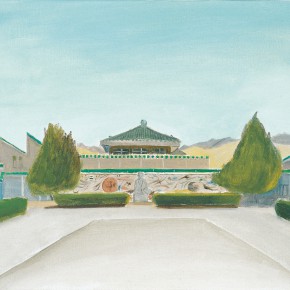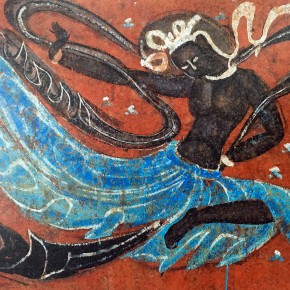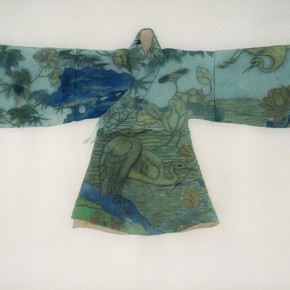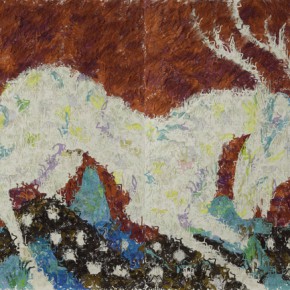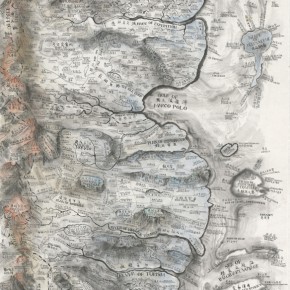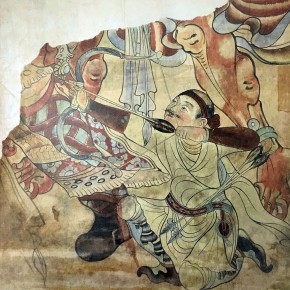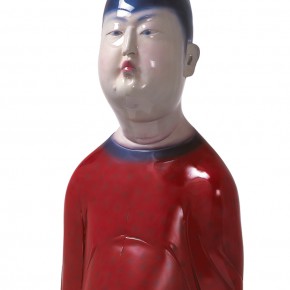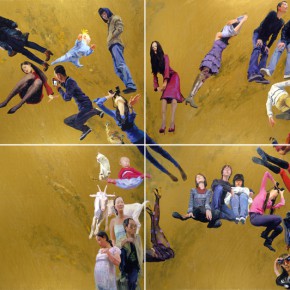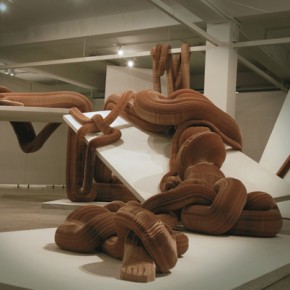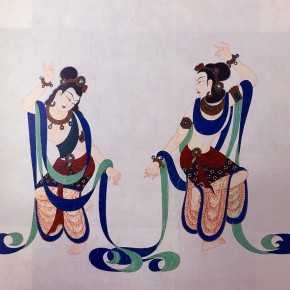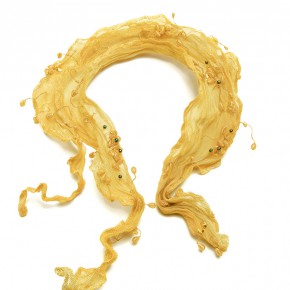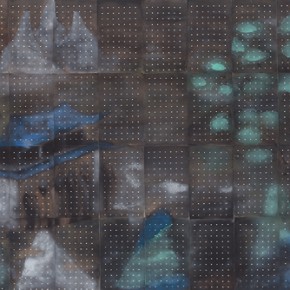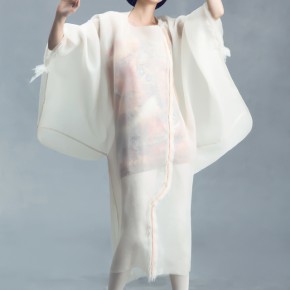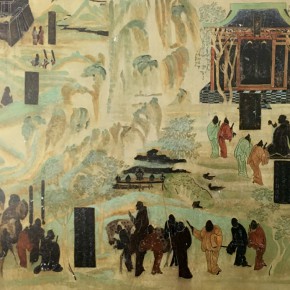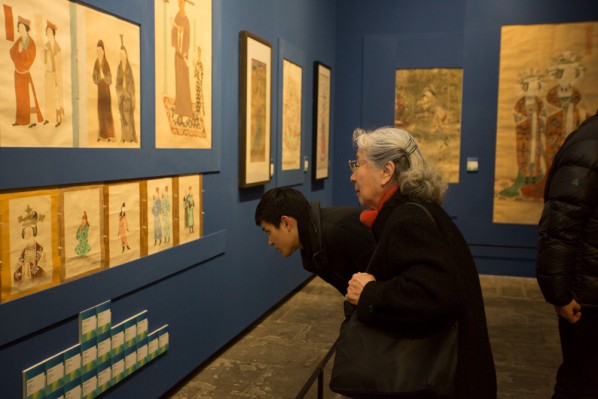
More than two thousand years ago, the Emperor Han Wu who had rare gifts and a bold strategy, sent Zhang Qian to the western regions to contact countries in the West such as Yuezhi and Wusun to join them to attack Xiongnu in order to sweep out the Xiongnu nomads’ intrusion of northern China, the military plot had a greater impact than they could have imagined at that time. Zhang Qian’s mission successfully opened a road from Chang’an to the western regions, where silks were moved to the west and Buddhism moved to the east, the economy and culture of all ethnic groups from the Central Plain and the western regions intersected and became fused in this area, so that it was called the “Silk Road”.
During the period of the Five Northern Barbarian Tribes in Ancient China and Sixteen Countries, the central plains were filled with turmoil and the chaos of war, people bore hard times, when they saw glimmers of hope from Buddhism promoting the thought of an afterlife, Buddhism widely spread to the central plains. In AD 366, when the monk Lezun passed by Sanwei Mountain, he suddenly saw shining golden lights, which were like the presentation of ten thousand Buddhas, hence Lezun dug caves supporting Buddha and cultivated himself according to the Buddhism doctrine of the mountain valley, and then an original place for monks to spontaneously cultivate themselves according to Buddhism doctrine was established and were supported by nobles and the royal family, which had lasted for one thousand years, and created the worldwide famous Dunhuang art. Until the Great Wall was rebuilt and Suzhou Town was reset in the Ming dynasty, Dunhuang was locked outside of Jiayuguan, and craftsmen were moved in land, the creative activities of caves were stopped. In 1900, because Taoist Wang unconsciously discovered the scripture-storing cave, “Dunhuang Studies” then swept the world, and then raised a tide of “rediscovering” Dunhuang in the fields of art, music, design, artchitecture and so on.
In the history of modern art, Li Dinglong was one of the first group of people interested in Dunhuang Grottoes, and he copied the Dunhuang murals in the Mogao Grottoes from October 1937 to June 1938, held the “Li Dinglong’s Copies of Dunhuang Murals” in Lanzhou, Xi'an, Nanjing, Shanghai and other places since 1939, to bring the beautiful Dunhuang art to the field of modern Chinese art. Skilled in ink and brush, Zhang Daqian also went to Dunhuang to study in 1941, adopted the method of restoring the copy of Dunhuang murals, and published the picture album “Dafengtang’s Copies of Dunhuang Murals”, promoted the spread of the art of the grottoes throughout the world. When Dunhuang Academy was established in 1944, Chang Shuhong served as the president, and from then on it systematically unfolded the protection, copying and research of Dunhuang Grottoes art, the painters such as Dong Xiwen, Zhang Linying, Pan Qizi, Duan Wenjie, Lv Sibai, Shi Weixiang, Li Chengxian, Li Qiqiong, Ye Jianyu, Liu Boshu, Zhan Jianjun, successively went to Dunhuang to absorb the nutrition of creation, which also helps us to know a different Dunhuang from the perspective of painting. It can be said that, “Dunhuang is the origin of the development of Chinese art in the 20th century, to support the innovation, development and transformation of Chinese modern and contemporary art, promoting Chinese traditional context to develop towards a form of modern culture form” (commented by Fan Di’an).
Although Dunhuang art was created by the hands of craftsmen, it fully reflects the aesthetic requirement of traditional Chinese art in its form, Dunhuang frescoes were shaped with an outline, and the lines were flexible and of a dynamic rhythm, they also created the unique “Dunhuang Flying Apsaras” to a certain extent; with the use of monochromatic azurite, mineral green, cinnabar, indigo, gold foil, etc., reconciling the contrast of colors, to render a visual ornamental effect, which also directly affected the color processing of Dong Xiwen’s masterpiece “Founding Ceremony”, following the principle of a scattered perspective on a composition, and pays attention to the continuity of composition, which is exactly the same with a traditional method of composition of the Chinese painting, especially the long scroll. Since the 20th Century, under the tide of “the eastward transmission of western sciences”, the foreign art forms such as oil painting gradually became the mainstream of painting, although Chinese painters tried to be the same as the west as much as through study, copy, etc., it was difficult to cross the psychological gap in the face of thousands of years of traditional aesthetic habits, the topic of “nationalization of oil painting” was on the agenda, until the 1950s and 1960s, the most discussed question was how to make it nationalized. The excellent features of Dunhuang art was undoubtedly the freshest and strongest, and it also offered an exit for the problem of nationalization. At the same time, the magnificent and brilliant national history and cultural tradition also greatly enhanced the national pride and self-confidence of the painters, to eliminate the national nihilism that diffused over the sky in a specific period to a certain extent, through the inferring and studying of several generations of artists in Dunhuang, they consciously used their own creative language, to form a new painting style with Chinese cultural characteristics, laying a foundation for the later maturity and development of Chinese oil painting.
In the contemporary global and multivariate creative horizon, Dunhuang art is still the starting point for the creation of many contemporary artists. Some artists directly drew the scenery of Dunhuang on site, describing the cultural holy land through a sketch; some focused on a specific “Dunhuang artistic image”, profoundly analyzing its cultural connotation, to deduce the same story of Buddhist scriptures through a contemporary art approach, with a new cultural perspective of the transformation from tradition to contemporary; Dunhuang is a spatial and material concept, and also a spiritual and cultural concept, it is a combination of traditional Chinese cultures, it started from the concept to sort out the ancient and modern cultural mental maps bearing in mind the aesthetic, emotional and etiquette aspects; starting from the overall Dunhuang artistic image and local elements, closely combiing with the present aesthetic, living habits, blending “Dunhuang” into the product and life, to reproduce the classical aesthetic of the glorious Tang Dynasty; Silk Road connects the east and the west, and more communicates with different cultures, while it is also the origin of artistic creation, the use of the unusual but wonderful thinking to create a silk road with the individual artistic contextual features that are visual or auditory art…
Dunhuang does not only reflect on the existing caves, statues, murals in the northwestern Gobi desert, it is also the cultural factor behind the Chinese art developmental context and creative status quo, so it is a form of traditional civilization’s hidden energy for contemporary culture.
Text by Zhang Wenzhi, translated by Chen Peihua and edited by Sue/CAFA ART INFO


